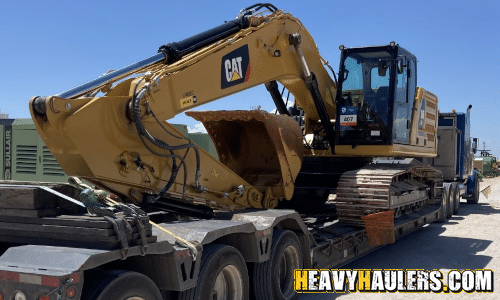Now Reading: What Is Consolidated Shipping?
-
01
What Is Consolidated Shipping?
What Is Consolidated Shipping?

If you are considering the best time to utilize freight transport, it is most suitable when you need to move large quantities of cargo or goods that traditional methods cannot accommodate. In the shipping and logistics sector, freight carriers offer various techniques to enhance the efficiency of such requirements by tailoring them to meet your specific transportation needs.
One of the strategies they employ is consolidated freight shipping, where they maximize trailer or truck space through tactics such as combining shipments. This method is utilized by experts in heavy or oversized load transport, like machinery shipping professionals, to reduce costs, improve efficiency, optimize space utilization, and enhance cargo safety.
Definition of Consolidated Shipping
Consolidated shipping, also known as order or cargo consolidation, is a Less-Than-Truckload (LTL) approach employed by transport and logistics firms to merge loads from multiple individual clients into a single full container shipment. This method helps carriers boost efficiency while allowing shippers to save on expenses, ship more loads, and ensure prompt delivery, thus enhancing customer satisfaction.
To meet global shipping standards, transport and logistics companies must be equipped to address all their clients’ requirements by utilizing diverse methods such as consolidated freight transport. They should also navigate the evolving shipping industry with scalable and adaptable solutions.
Benefits of Consolidated Freight Shipping
When carriers consolidate shipments, they offer numerous advantages to both themselves and the shipper. The primary goal of these methods is to maintain supply chain efficiency, with benefits including efficient space utilization, cost savings through sharing expenses with multiple shippers, secure and dependable transport, tailored solutions, streamlined logistics, eco-friendly shipping leading to reduced carbon footprint, economies of scale, enhanced delivery speed, scalability, and flexibility.
Understanding and leveraging these benefits allows businesses to streamline their logistics operations and daily activities, ultimately boosting revenue.
Contrasting Bulk Shipping and Consolidated Shipping
While bulk and consolidated shipping may share some similarities, they differ in their core concepts. Bulk shipping typically involves transporting large quantities of a single load or commodity without packaging in a single shipment, suitable for long-distance trips, particularly across the ocean, and time-sensitive cargo. In contrast, consolidated shipping combines various shipments from different clients into a single full container, ideal for shorter trips and time-sensitive loads.
These shipping methods enable shippers to transport cargo over long distances efficiently.
How Consolidated Shipping Can Save You Money
Many shippers opt for consolidated freight shipping due to its cost-saving nature, especially for those transporting high volumes of smaller quantities regularly. By effectively implementing this method, businesses can cut costs and enhance revenue generation by streamlining supply chain operations.
Consolidated shipping reduces expenses as you only pay for the space your load occupies, with costs shared among multiple shippers. Packaging costs are minimized, and discounts on large shipments may be available. Additionally, quicker delivery times reduce storage costs, resulting in overall savings.
This method, offered by reputable heavy shipping and logistics firms like Heavy Haulers, is a reliable, cost-effective, and time-saving solution, providing tracking and insurance options. It offers an opportunity for shippers to optimize resources, benefit from economies of scale, and reduce charges associated with transporting smaller shipments. Understanding the core benefits and consolidation options provided by your carrier is essential for effective shipment planning.






